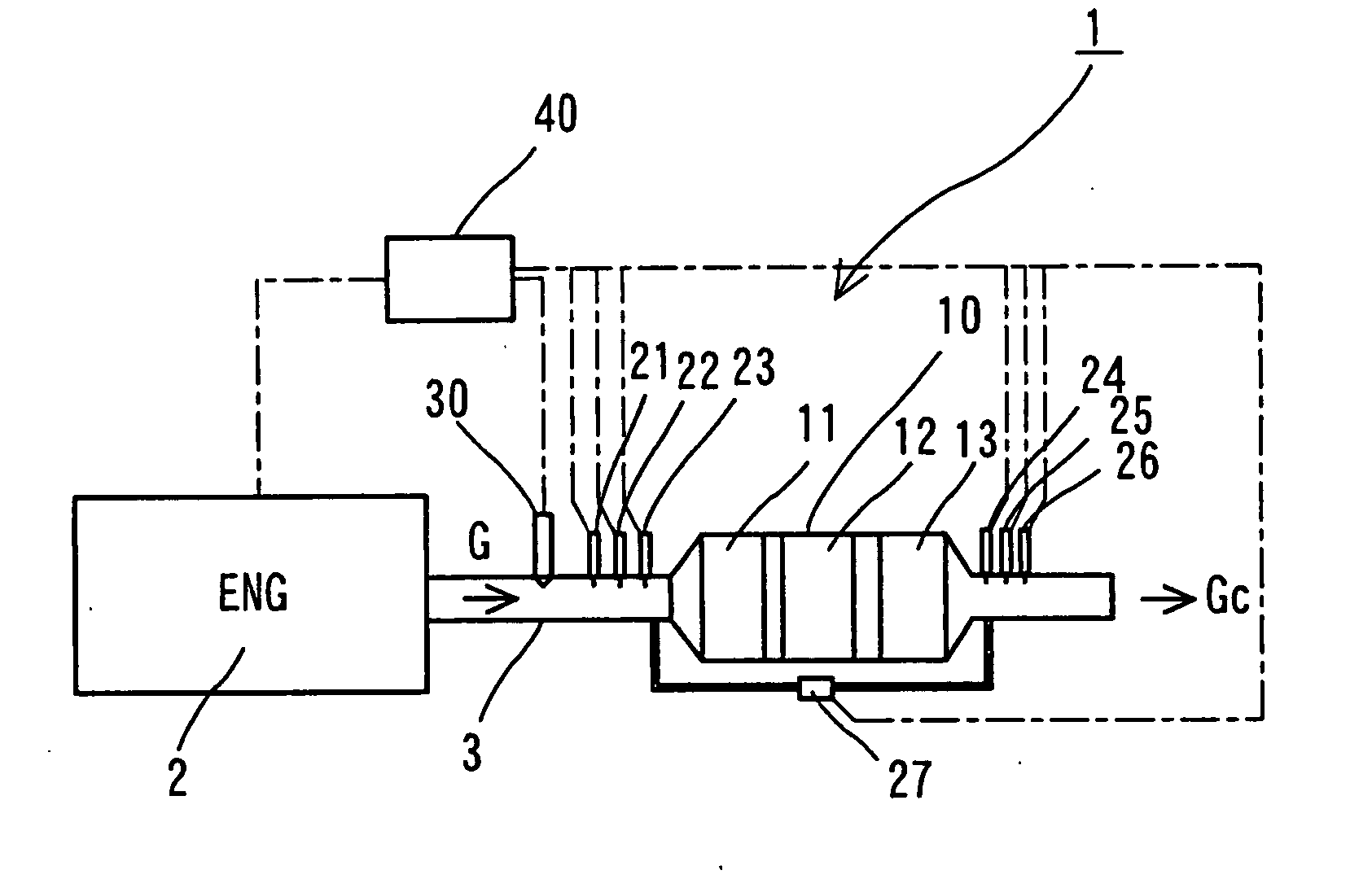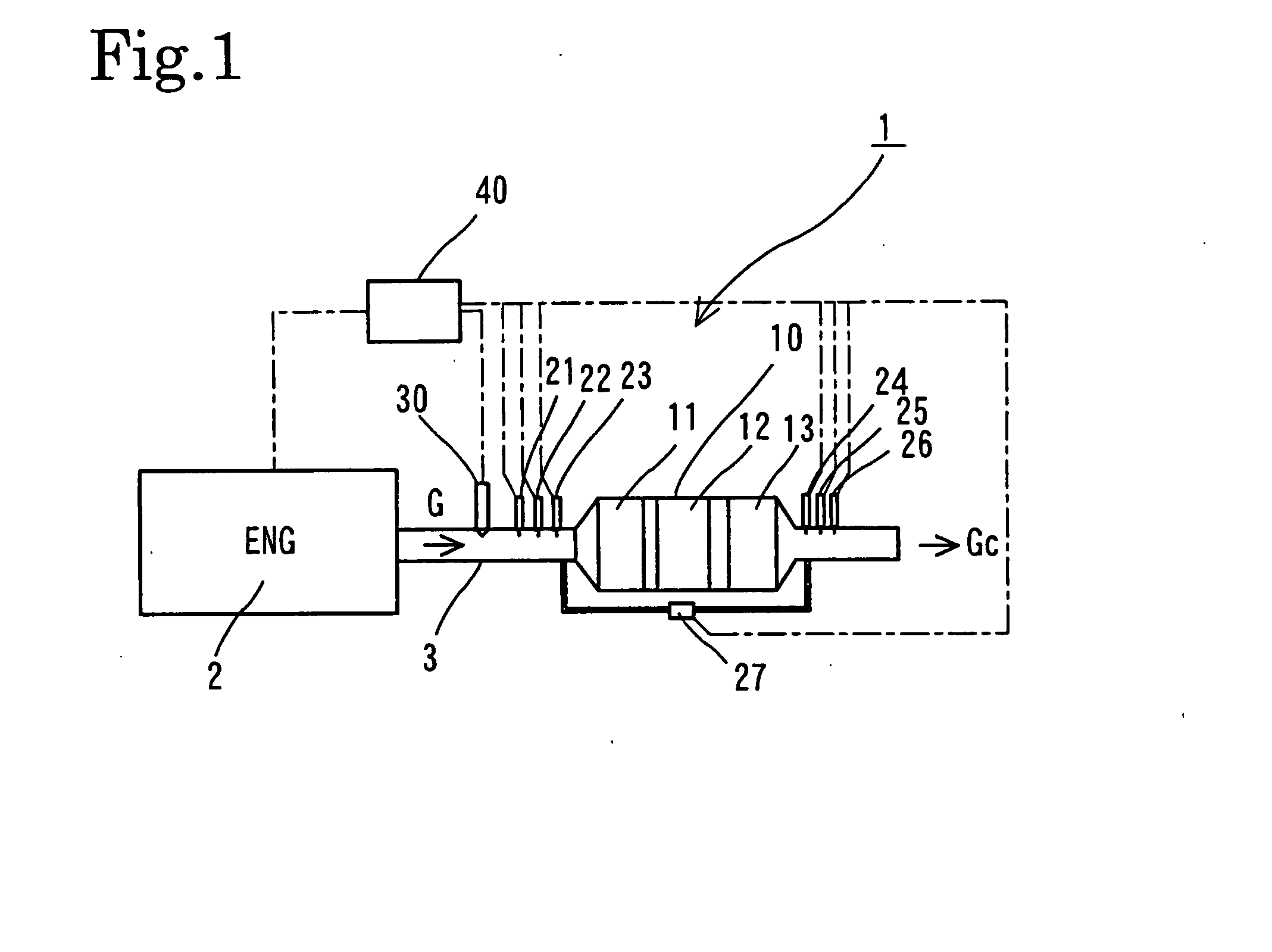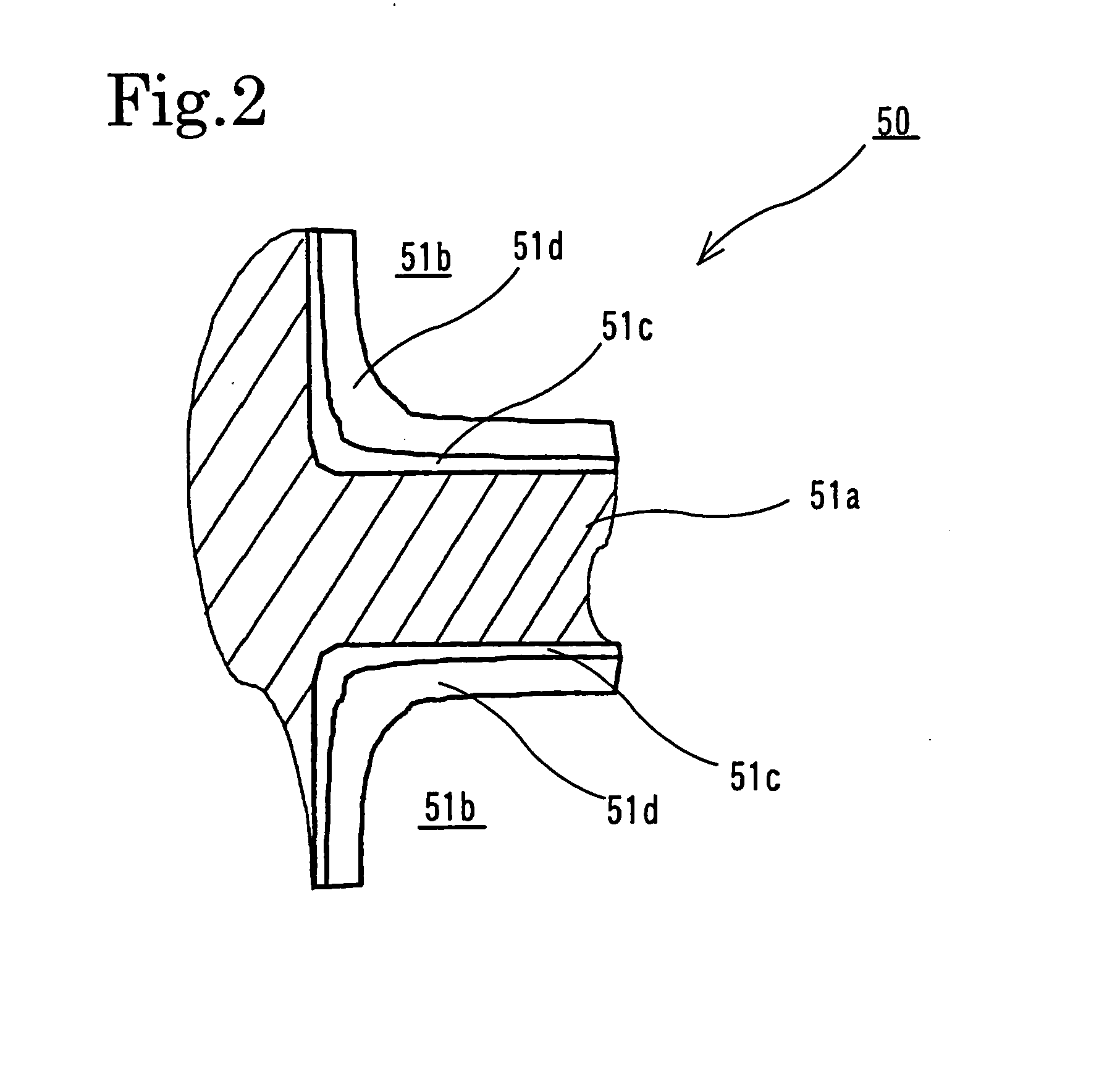Method of Raising Temperature in Exhaust-Gas Purifier and Exhaust-Gas Purification System
a technology of exhaust gas purifier and purification system, which is applied in the direction of exhaust treatment electric control, electrical control, separation process, etc., can solve the problems of reducing the purification rate of nox and pm, clogging of filters, and lowering the reduction performance, so as to achieve efficient heat generation, reduce the restriction on mounting onboard, and reduce the effect of heat generation
- Summary
- Abstract
- Description
- Claims
- Application Information
AI Technical Summary
Benefits of technology
Problems solved by technology
Method used
Image
Examples
example 1
[0143]In the first example, through the NOx direct reduction type catalyst 13 carrying the oxygen storage capacitor substance in the catalyst layer 51d (51c, 51d) of the cordierite honeycomb 51a shown in FIG. 2, a gas imitating the rich condition (R) of the exhaust-gas and a gas imitating the lean condition (L) of the exhaust-gas are passed through with a given time interval at a given temperature, and the change of the temperature in the vicinity of the catalyst surface is measured.
[0144]The exhaust-gas in the rich condition is imitated by a gas in which HC, NO, CO are mixed in nitrogen (N2), which is an inactive gas. The exhaust-gas in the lean condition (L) is imitated by a mixed gas in which HC, NO, CO are mixed in a mixed gas of nitrogen (N2) and oxygen (O2) and moreover, adjusted to have the air excess ratio (λ) of 1.1.
[0145]Then, as shown in FIG. 8, the gas temperature is set to 300° C., 400° C., and 500° C. Moreover, for each temperature, the ratio of time for the rich condi...
example 2
[0148]Next, in a second example, the exhaust-gas after-treatment device is formed from the NOx direct reduction type catalyst carrying the oxygen storage capacitor substance in a catalyst layer in the configuration in FIG. 2. This exhaust-gas after-treatment device is installed in the exhaust passage of the engine. The time interval of the rich condition (R) / lean condition (L) of the exhaust-gas is changed to compare the reduction characteristics over the NOx in the exhaust-gas. The result is shown in FIG. 9. According to the result, it is known that active utilization of self-heating of the CeO2 occurring at lean switching gives higher NOx reduction rate than the case not utilizing it (“none”).
example 3
[0149]Cordierite honeycomb coated with a catalyst layer of platinum / aluminum oxide carrying an oxygen storage capacitor substance is crushed in a mortar and adjusted into a powder state. Moreover, PM sampled from the diesel exhaust-gas is added by 10 mass % and lightly mixed so as to prepare a mixed powder. This is made as a mixed powder of a third example.
[0150]Also, cordierite honeycomb coated with platinum / aluminum oxide as a catalyst layer is crushed in a mortar and adjusted into a powder state. Moreover, PM sampled from the diesel exhaust-gas is added by 10 mass % and lightly mixed so as to prepare a mixed powder. This is made as a mixed powder of a comparative example.
[0151]Next, similarly to the first example, the gas imitating the rich condition (R) of the exhaust-gas and the gas imitating the lean condition (L) of the exhaust-gas are switched with a given time interval and passed through at the temperature of 150° C., 200° C., 250° C., 300° C., 400° C., and the weight chang...
PUM
| Property | Measurement | Unit |
|---|---|---|
| exhaust-gas temperature | aaaaa | aaaaa |
| exhaust-gas temperature | aaaaa | aaaaa |
| surface temperature | aaaaa | aaaaa |
Abstract
Description
Claims
Application Information
 Login to View More
Login to View More - R&D
- Intellectual Property
- Life Sciences
- Materials
- Tech Scout
- Unparalleled Data Quality
- Higher Quality Content
- 60% Fewer Hallucinations
Browse by: Latest US Patents, China's latest patents, Technical Efficacy Thesaurus, Application Domain, Technology Topic, Popular Technical Reports.
© 2025 PatSnap. All rights reserved.Legal|Privacy policy|Modern Slavery Act Transparency Statement|Sitemap|About US| Contact US: help@patsnap.com



